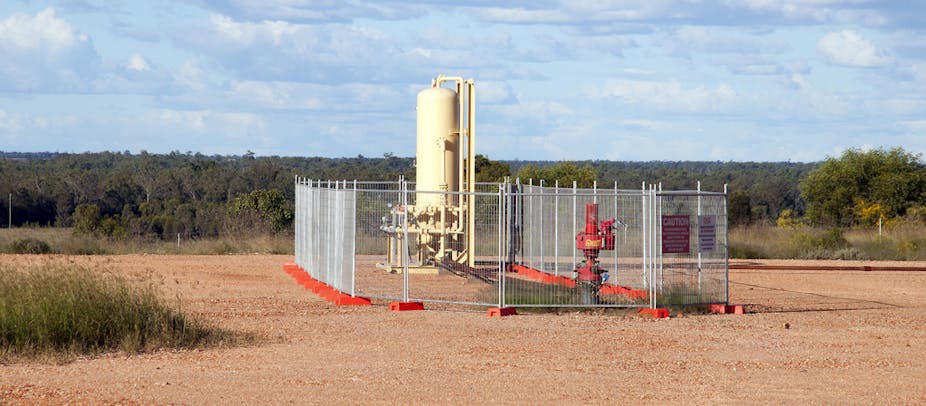Concerns about the unconventional gas industry’s environmental impacts have been around for some time. The major issues are its effect on surface and groundwater, and growing evidence of greater-than-anticipated climate impacts from fugitive emissions.
A recently released independent study of the atmosphere of a coal seam gas field near Tara, Queensland, has shown evidence of widespread releases of methane and carbon dioxide at levels significantly higher than those outside the fields. This lends support to argument that coal seam gas and shale gas could present an obstacle rather than a bridge to a clean energy future.
The researchers note that the presence of methane indicates potential for other gases leaking into the atmosphere. Unfortunately, we don’t know what these gases are because we are not identifying and measuring them. Indeed, we lack adequate baseline studies, and ongoing monitoring of water and air in relation to unconventional gas developments.
Where there are no data, industry and government can continue to deny impacts. When gas started bubbling up in the Condamine River, for instance, denials from industry followed swiftly, but science was notably absent, despite it being plausible that coal seam gas was the source.
While methane at the levels reported is unlikely to cause direct health effects, the question of what else is leaking out remains. And how is this being assessed? How might local residents be affected? And are there adequate protections?
Research from the United States gives pause for thought. Systematic evidence for methane contamination of drinking water associated with unconventional gas extraction has been reported and a US Environmental Protection Agency (EPA) investigation in Wyoming has found groundwater contamination likely to be the result of gas production and fracking practices.

A human health risk assessment of air emissions from unconventional gas extraction in Colorado found that residents living closest to gas wells had higher risks for poor health, including higher cancer risk than those living further away.
We know that a range of hydrocarbons and volatile organic compounds (VOCs) can be released into air from unconventional gas operations. Volatile organic compounds are carbon-containing chemicals that evaporate easily.
The US EPA is introducing legislation to significantly curb air emissions from gas fields, and this is expected to result in an almost 95% reduction in VOC emissions.
This is a big step forward for the environment and also for the health of people living in gas fields in the United States. The effects of volatile organic compounds vary with the types of chemical, duration of exposure and concentration, but they can cause eye, nose and airway irritation, headache, nausea, dizziness, and loss of coordination. In the long term, there can be damage to a number of organ systems in the body, and some VOCs are known or suspected carcinogens.
Interestingly, a number of Tara residents have been reporting symptoms such as headaches, rashes, nausea and vomiting, nose bleeds and eye and throat irritation. The cause of these symptoms is unknown but investigation of health complaints can be very difficult in the absence of a significant investment in comprehensive environmental monitoring.
Medical and community groups have been for some time been pointing out the potential dangers to health from unconventional gas development. They have also been highlighting the need for adequate regulation, comprehensive transparent environmental testing and health impact assessment. Let’s find out what’s in the air and take some action for our health’s sake.

